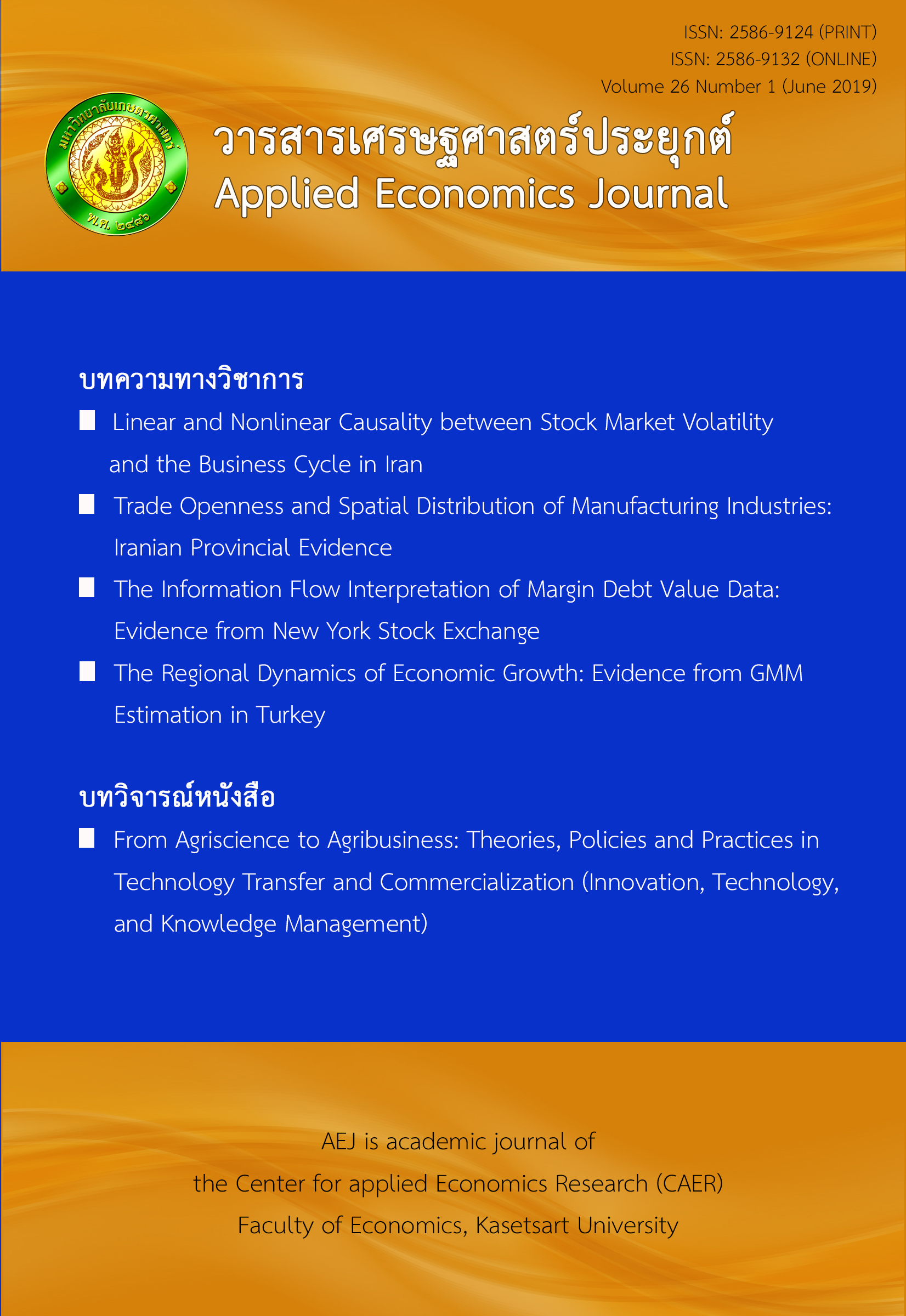The Information Flow Interpretation of Margin Debt Value Data: Evidence from New York Stock Exchange
Main Article Content
Abstract
This paper examines the heteroscedasticity in NYSE Composite index returns using margin debt value data from a sampling period of December 1996 to November 2017. Following Lamoureux and Lastrapes (1990), the lagged margin debt value is included in the conditional variance of GARCH and EGARCH models. The results of EGARCH estimates show that the ARCH effect vanishes and the total volatility persistence is most reduced, confirming that the margin debt value is a reflection of time dependence in the rate of new information arrival on stock market borrowing (i.e. margin borrowing). Further, the lagged margin debt value coefficient is negatively and significantly related to conditional volatility. This implies that— when the new information pertaining to credit risk flows to the market, the investors adjust the risk downward (i.e. downward revision) as their repose to the flow of new information. However, GARCH estimates have shown to provide a weaker reflection of the effect of information pertaining to stock market borrowing (i.e. margin borrowing) on conditional volatility and therefore had little explanatory power of heteroscedasticity in the stock return data. Overall, the results suggest that the form of persistence of new information arrival on margin debt value data in the conditional volatility is a reflection of ARCH type of residual heteroscedasticity of stock return data of the New York Stock Exchange.
Article Details
The paper is published under CC BY-NC-ND, in which the article is freely downloaded and shared in its original form non-commercially and its citation details are identified.


